I was recently asked which (scaling) framework is my favorite. Admittedly: In the context of the conversation, it was clearly more of a rhetorical question. Nevertheless, the question reminds me of the days when people collected basketball cards or Panini stickers. Instead of "Michael Jorden or Charles Barkley", today it's just "Craig Larman, Dean Leffingwell or Henrik Kniberg"?
When it comes to scaling frameworks, most companies have already agreed on their preferred model. We see even more variance in another area: Design Thinking.
The creative movement and the realization that creativity cannot be standardized.
How many phases does your Design Thinking have? 3? 4? 5? 6? - All correct. There are different design thinking models that have different numbers of phases. If you compare the different models, you will find that the phases describe similar activities in different detail and define different numbers of intermediate steps for teams. Different models also express different priorities. Three examples in comparison:
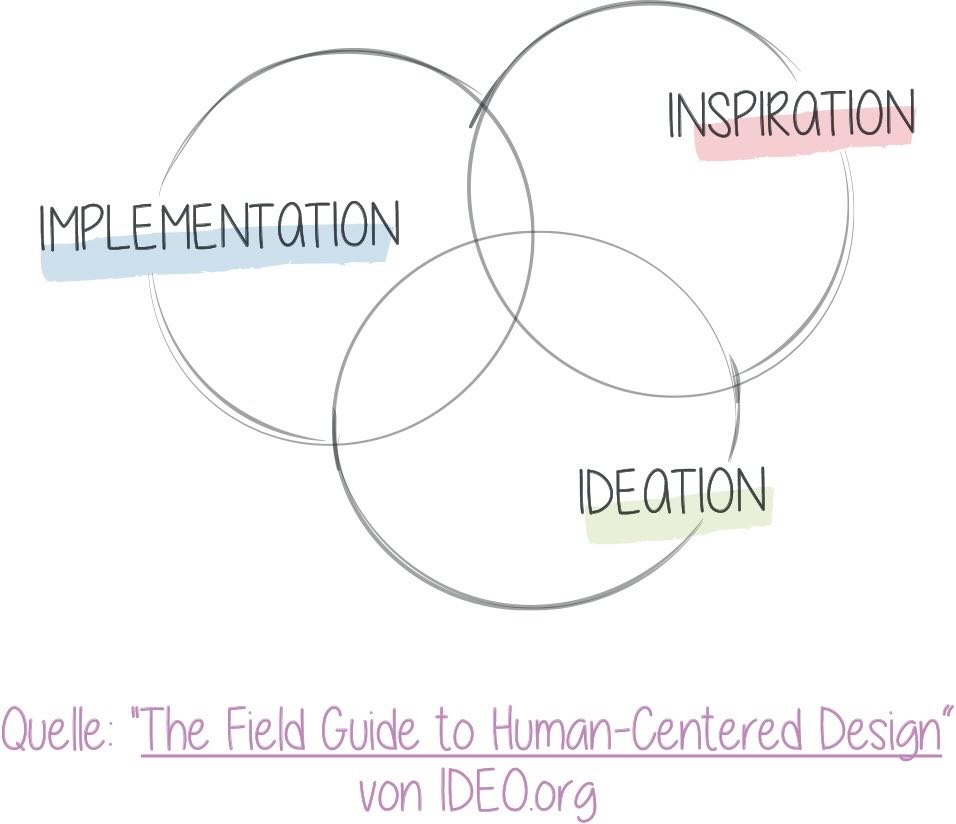 3-phase model (ideo): Inspiration, ideation and implementation as a continuous process
3-phase model (ideo): Inspiration, ideation and implementation as a continuous process
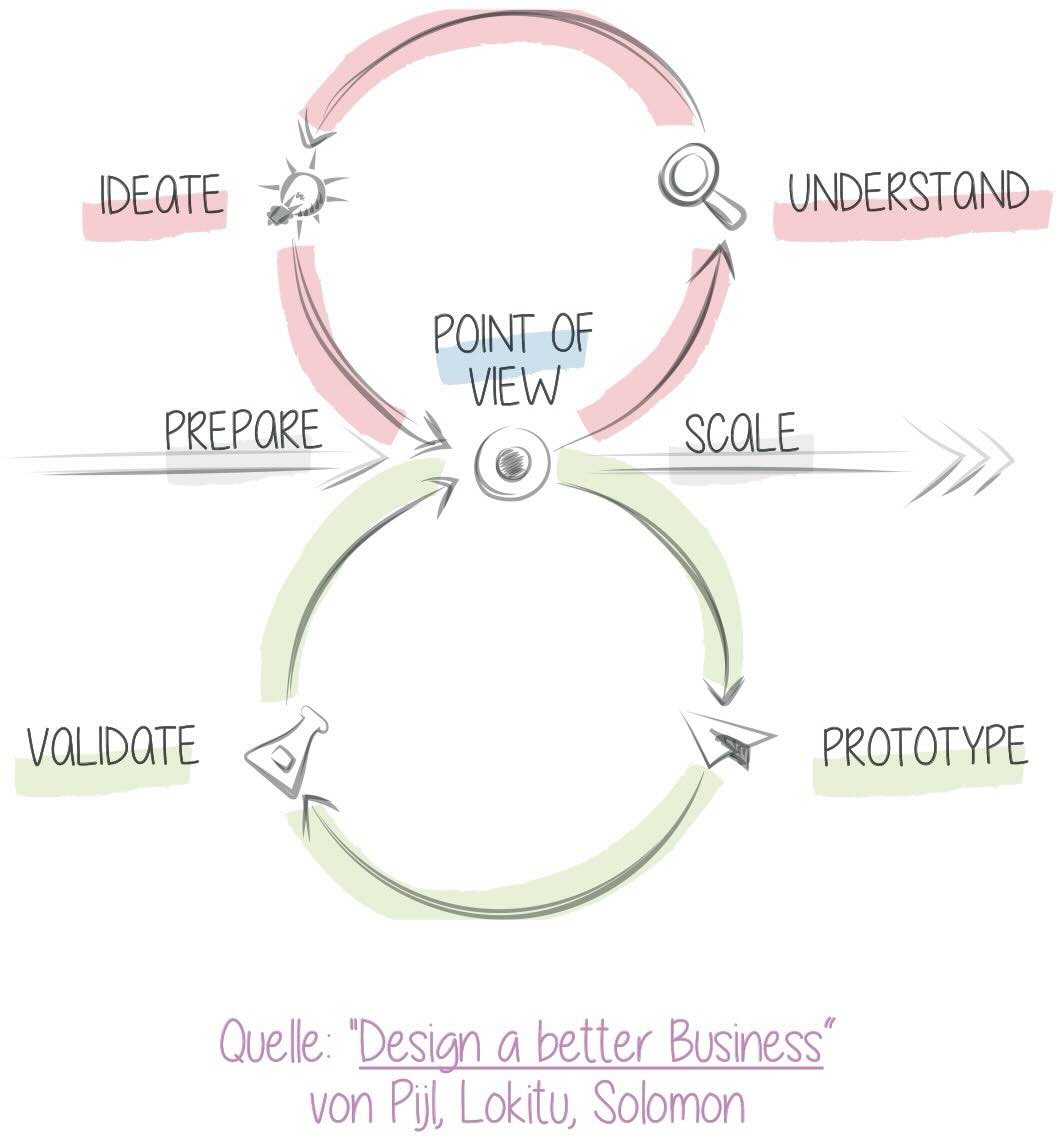 5-phase model (Pijl, Lokitu & Solomon): There is room for creativity and room for implementation, with a consolidated "point of view" in between.
5-phase model (Pijl, Lokitu & Solomon): There is room for creativity and room for implementation, with a consolidated "point of view" in between.
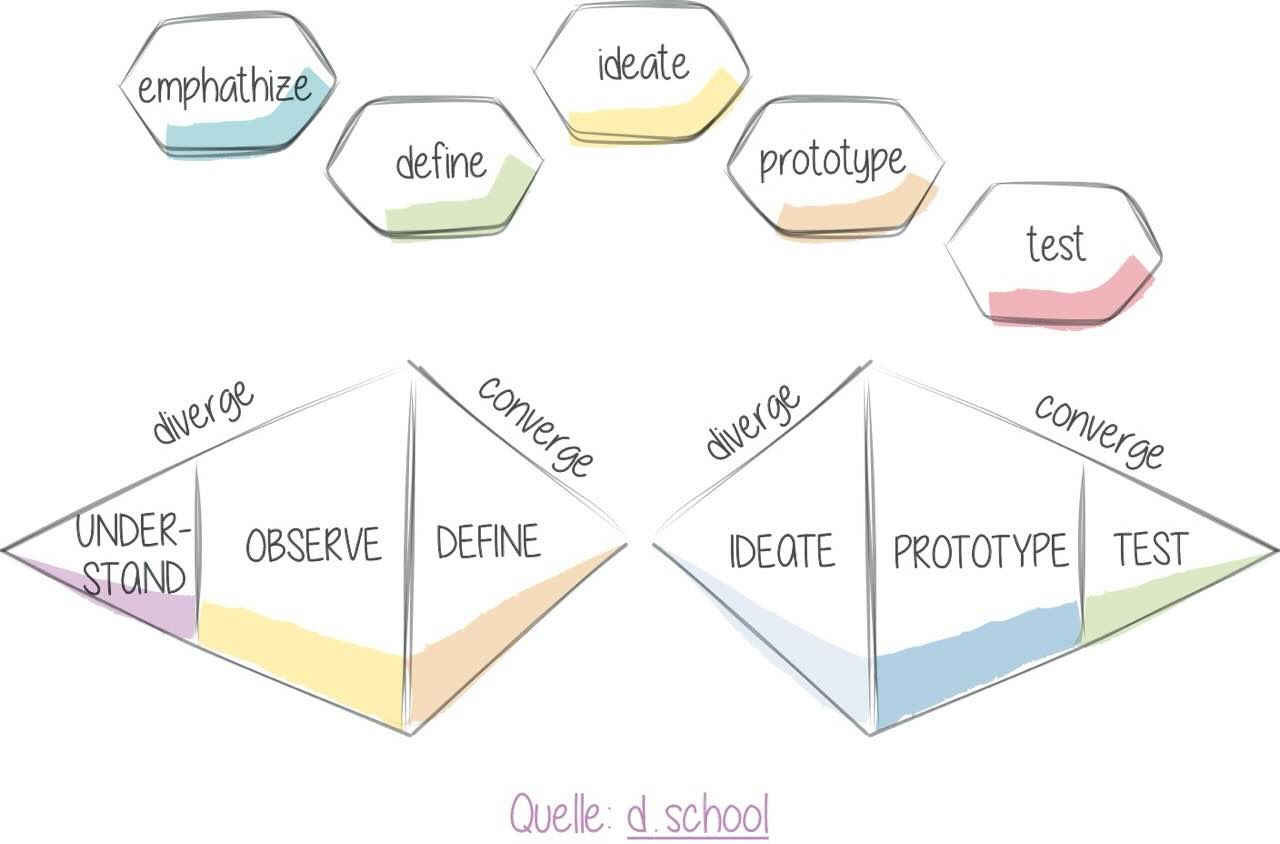 6-phase model (d.school): The Double Diamond describes 6 phases. The model primarily expresses the fact that the approach alternates between diverging and converging.
6-phase model (d.school): The Double Diamond describes 6 phases. The model primarily expresses the fact that the approach alternates between diverging and converging.
The exciting thing about it? - All models are "correct" and describe what happens in design thinking. In training sessions and simulations, we find that people from the same group react differently to different models. Some people are more comfortable with one, others understand another better. Creativity is difficult to standardize. In order to understand design thinking, it therefore makes sense to allow these different models to exist in parallel. This works in practice. - Doing SAFe and LeSS at the same time is much more difficult.
Nevertheless, we need a certain standard in our operational activities. This is where the Google X-Labs process model comes into its own: The Design Sprint. The Design Sprint describes how to implement a design thinking iteration. If you follow the recommendations of the inventors, a design sprint lasts from Monday to Friday and has a clear agenda.
There are also standardized toolkits, such as those from Darkhorse, which offer templates for work steps in the individual phases. This also helps with implementation and gives the whole process more scope for development.
The countermovement and Maslow's hammer.
There are people who, for understandable reasons, refuse to expose themselves to all this stress. You can easily avoid having to keep track of the many different models by using other, standardized agile frameworks. Scrum, for example: clearly described, more mature, more comprehensible. We call this "Maslow's hammer". Maslow's hammer "...refers to the observation that people who are well acquainted with a tool (or a procedure) tend to use this tool even when another tool would be more suitable." (source) - or to put it simply: "When you hold a hammer in your hand, everything looks like a nail!"
You can do it once in a while, but it doesn't correspond to the purpose of the inventor. In order to understand the purpose of the inventor (of pretty much all agile frameworks), it is worth taking a step back at this point and noting the following:
- All common agile frameworks have their origins in product development
- Agility is not an end in itself, but has the purpose of supporting product development
- The demands on working methods change over the course of the product development process
In addition, a series of hypotheses and a summarizing picture:
- The product development process goes from the idea (left) to series production (right) - in between there are intermediate stages in the form of prototypes or executable and demonstrable increments
- In the beginning, qualities such as co-creativity, inventiveness and innovation are desirable. But we don't have to reinvent the wheel just before series production.
- The cost-per-unit or first-copy costs fall as the product matures.
- On the other hand, initial prototypes do not yet have to meet final quality criteria and standards. In production, we aim to increase the production cadence. In software development, this is known as a short ticket turnaround time during operation. It all comes with time.
- Other features such as early and regular delivery, inspection and customization as well as transparency are important in all phases of the product development process.
Different agile frameworks provide answers to different needs along this process:
Roughly speaking, Design Thinking is more suitable for the more creative part, Kanban for standardization at high cadences. Scrum is suitable for "the part in between".
The co-existence of agile frameworks in general and the co-existence of design thinking frameworks in particular.
This means that not only different ideas of design thinking can coexist. Depending on requirements, different agile frameworks can also be used. The good thing about this is that they can be combined with each other. To get this far, however, you first need to choose the right framework. And, as always, the two credos apply:
- "If Scrum is the answer, what is the question?" and
- "If in doubt, the agile coach you trust will help you"

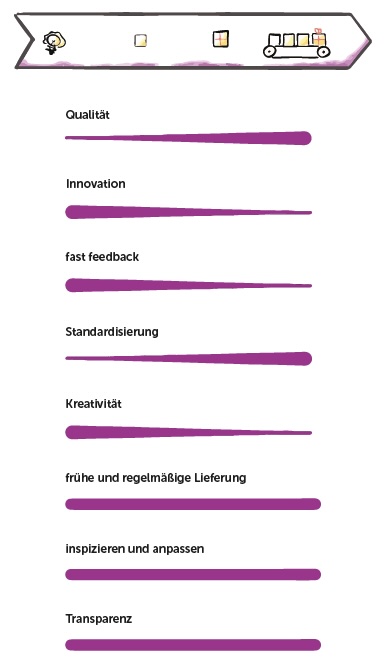
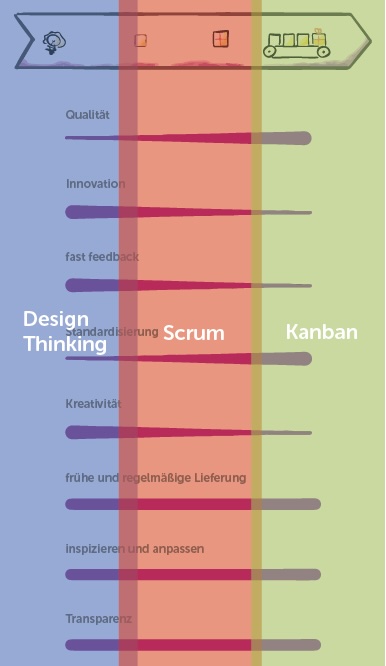
Write a comment